We know how important it is to keep your Betta fish healthy and thriving. Although this fish has beauty like none other, it is prone to many diseases. In today’s article, we will discuss one such disease known as the Betta fish Popeye disease. It’s also commonly known as the swollen eye disease.
Let me ask: Did your Betta fish ever look like it hasn’t slept for a while? The most common symptom of this disease is swollen eyes in Betta fish. Like the Betta fish is tired and sleepless for a long time.
Has your Betta fish ever looked like it’s been up all night? The most common symptom of this disease is swollen eyes in Betta fish. It might appear as if the Betta fish hasn’t slept for days. For more symptoms of Betta fish Popeye and tips to treat and prevent this disease in Betta fish, keep reading.
What is Betta Fish Popeye?
Popeye disease in betta fish, scientifically known as exophthalmia, is a condition where one or both eyes of the fish swell up and appear to be protruding from the eye sockets. Depending on the case, fluid accumulation behind the eye or in the eye could cause this swelling.
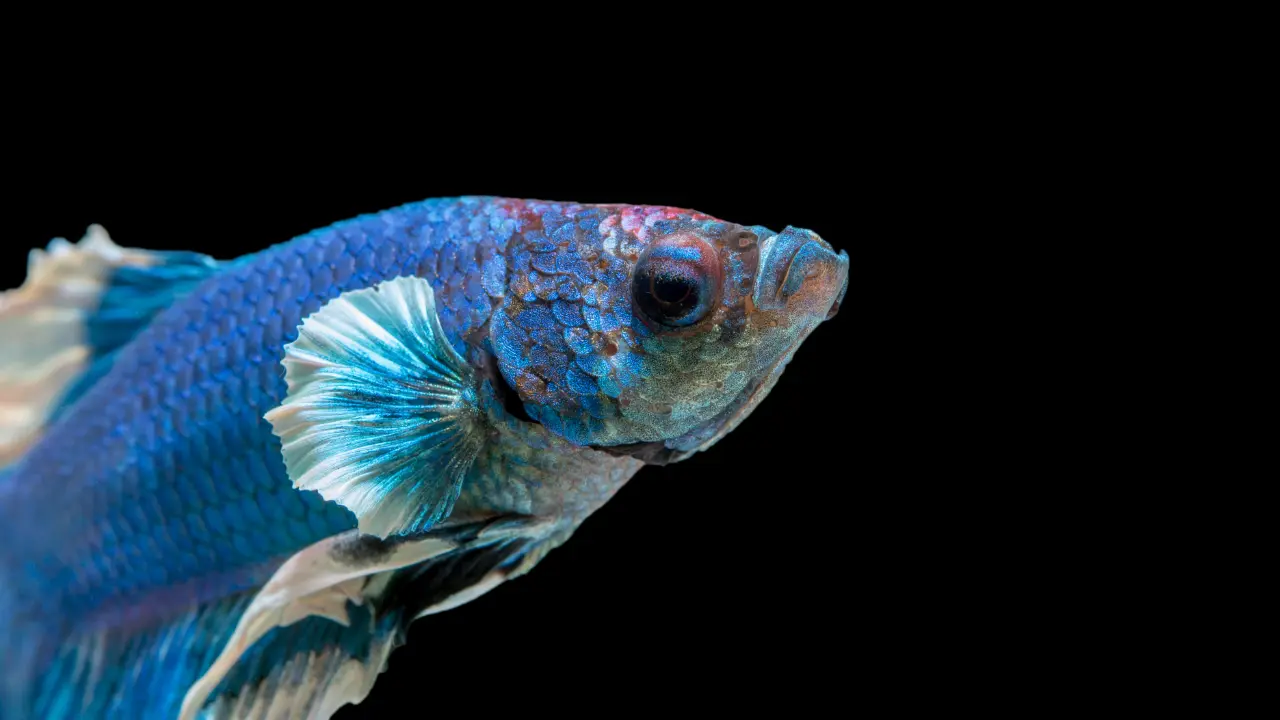
Additionally, the eyes could become hazy or discolored due to an infection or inflammation. These changes affect Betta’s behavior as it experiences discomfort and pain. Your Betta might act lazy and have reduced to no appetite. It might prefer hiding and avoiding due to this condition.
Generally, this disease is caused because of two reasons, either injury or infection. Injury because of tank decor or aggressive tankmates is usually easier to treat. However, if Popeye is caused by a bacterial or fungal infection, more intensive treatment is required. Bacterial outbreaks that cause Betta fish Popeye are a result of a dirty tank. So, it’s best to maintain a pristine aquarium with proper parameters and clean water.
Moreover, Popeyes is not just temporary swelling in the eyes. This disease can be an indicator of quite dangerous conditions like kidney failure and metabolic problems. These conditions lead to fluid buildup around the eyes which causes swelling.
Betta Fish Popeye: Causes & Types
Betta fish Popeye can have many underlying causes. However, the most common causes of betta Popeye disease include injury and infection in betta fish. To find out the actual reason behind this disease in your betta fish, you will have to analyze the fish closely. Typically, you can judge the underlying cause of Popeye disease if the fish has Popeye in one or both eyes. Here’s a detailed guide to figuring out why your betta fish has Popeye disease along with its types, including unilateral and bilateral Popeye.
Unilateral Popeye in Betta Fish
In this type of Popeye, the Betta fish will only have one eye swollen. This is most probably caused because of physical injury. The Betta fish is a clumsy swimmer; it occasionally bumps into tank walls and aquarium decoration. This collision can cause such injuries which lead to Betta fish Popeye.
Another possible reason for a unilateral Popeye includes aggressive tank mates. As we know, Betta fish is a territorial fish and can get into fights. So, it’s possible to get injured during aggressive encounters with tank mates.

Bilateral Popeye in Betta Fish
In this type of Popeye, the Betta fish will have both its eyes affected. This sort of issue is connected to an underlying infection caused by fungi or bacteria. Additionally, Poor water conditions with high ammonia levels are either supporting betta fish Popeye or causing it.
Due to unsuitable tank conditions, the Betta’s immune system is weakened. This leaves the Betta fish defenseless and weak so other diseases can also attack. The best way to avoid this condition is to maintain a clean aquarium with good water quality and no toxins.
Bettfa Fish Popeye Symptoms
Popeye disease in betta fish has many symptoms that impact the fish’s lifestyle. These symptoms typically indicate an underlying condition. Here are some of the most common symptoms of Betta fish Popeye.
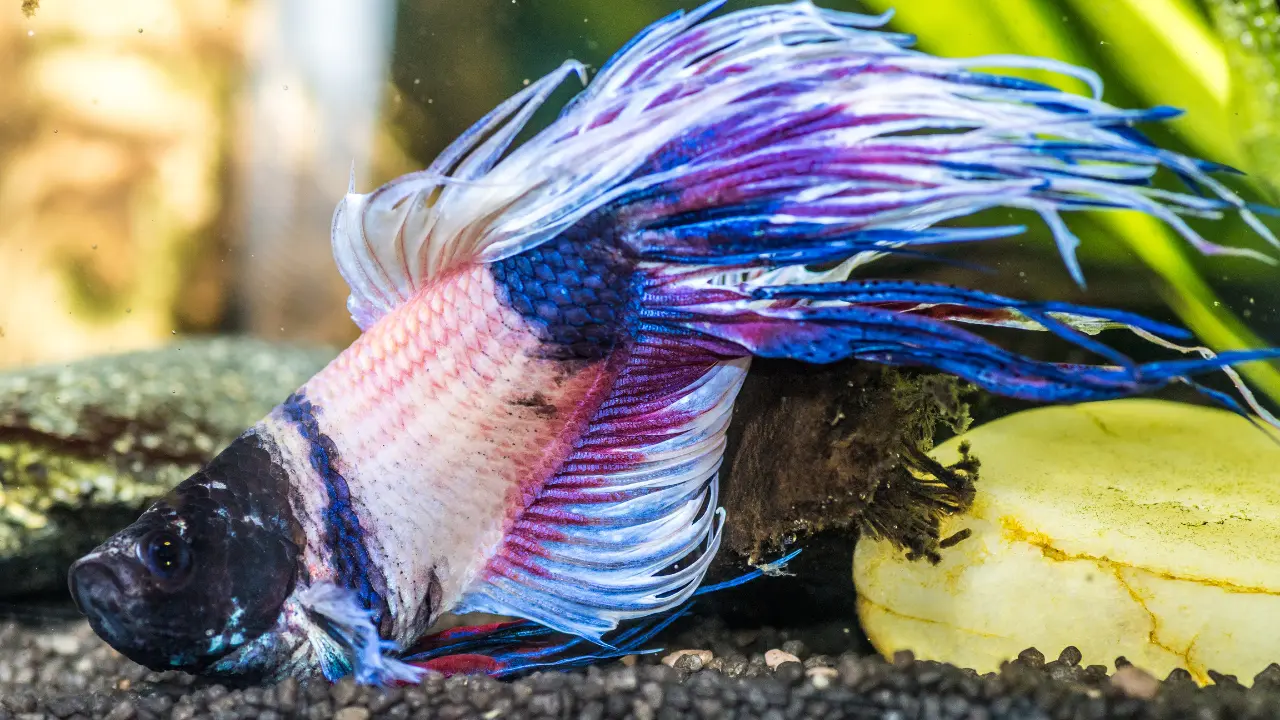
- Swelling or protrusion of one or both eyes
- Cloudy or discolored eyes due
- Behavioral changes such as lethargy and loss of appetite
- Difficulty in swimming due to pain and discomfort
- Avoiding light and hiding in dark spots of the tank
- In some cases, red or inflamed area around the eyes.
- The presence of excess mucous or a white ring around the eyes
All these symptoms indicate that your Betta fish needs immediate attention and treatment. With early detection of this disease, your betta can be fully recovered. However, if no treatment is provided timely, your betta can even lose its vision. Additionally, the Betta is at risk of secondary infection that may be deadly for the fish.
A Healthy Betta Eye VS Popeye
To promptly detect an issue with your Betta’s eyes, you must know the difference. A healthy Betta fish has clear and bright eyes. The eyes are proportional to the head and don’t seem large for the fish. A healthy Betta’s eyes always have smooth movements and a symmetrical shape.
Popeye, on the other hand, causes one or both eyes to bulge outwards. It seems as if the Betta’s eyes are coming out of the eye sockets. Often this issue is accompanied by a cloudy or milky effect in the eyes. In some cases, the eyes have a white ring around them.
Is Popeye fish disease contagious?
The answer to this question depends largely on the underlying cause of Popeye. Generally, this disease is not contagious, if caused by injury or physical trauma.
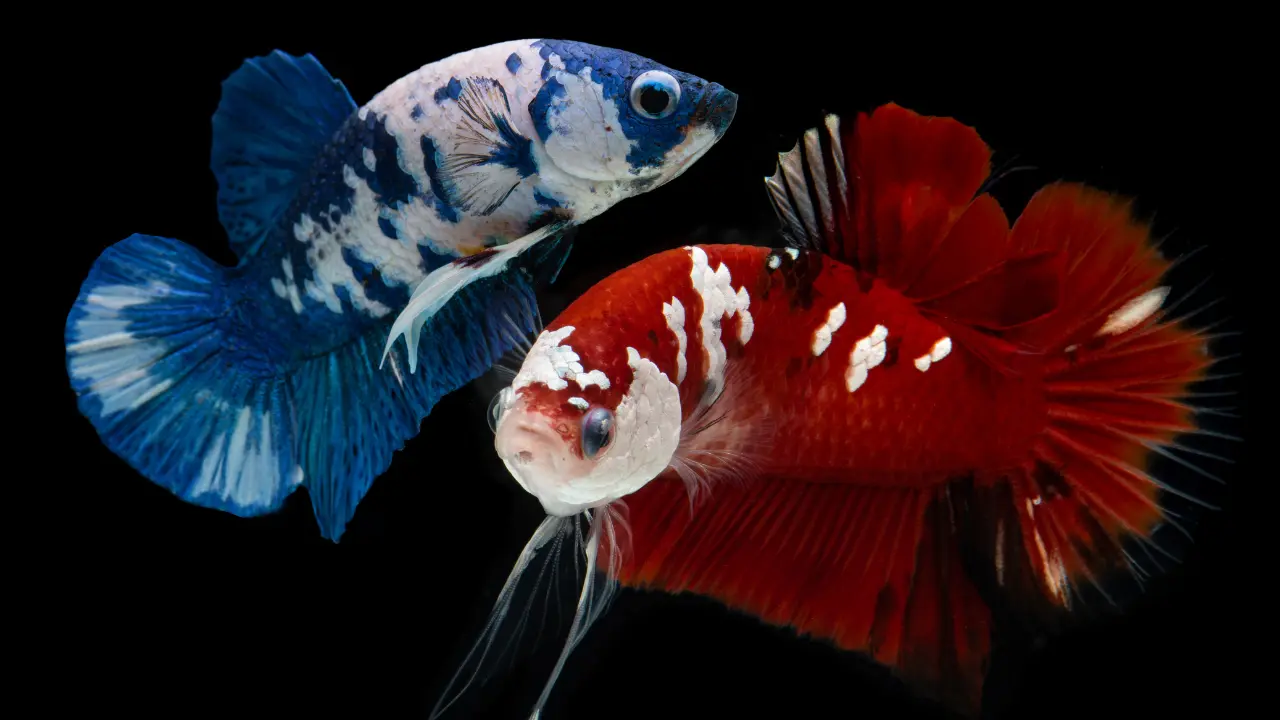
However, if Popeye is caused by a bacterial infection, it may become contagious and spread in the tank. If this happens then all the tankmates will be at risk of getting Popeye disease as well.
Overall, Popeye disease itself is not contagious but the underlying conditions can be. Thus, it’s best to isolate the fish until it recovers so there are no changes of an outbreak.
Betta Fish Popeye Treatment
Treating Popeye’s disease is not hard at all. Especially if injury to the eye is the reason behind this issue. However, you might need to put in some effort if the underlying cause is an infection. Here’s a comprehensive guide on how to treat betta fish Popeye.
Unilateral Popeye Treatment
In this type of Popeye, it’s usually just an injury that causes the eye to swell. So, you need to provide a clean and ideal environment to the Betta so that it heals quickly. Follow the Below given steps to treat Unilateral Popeye in Betta fish.
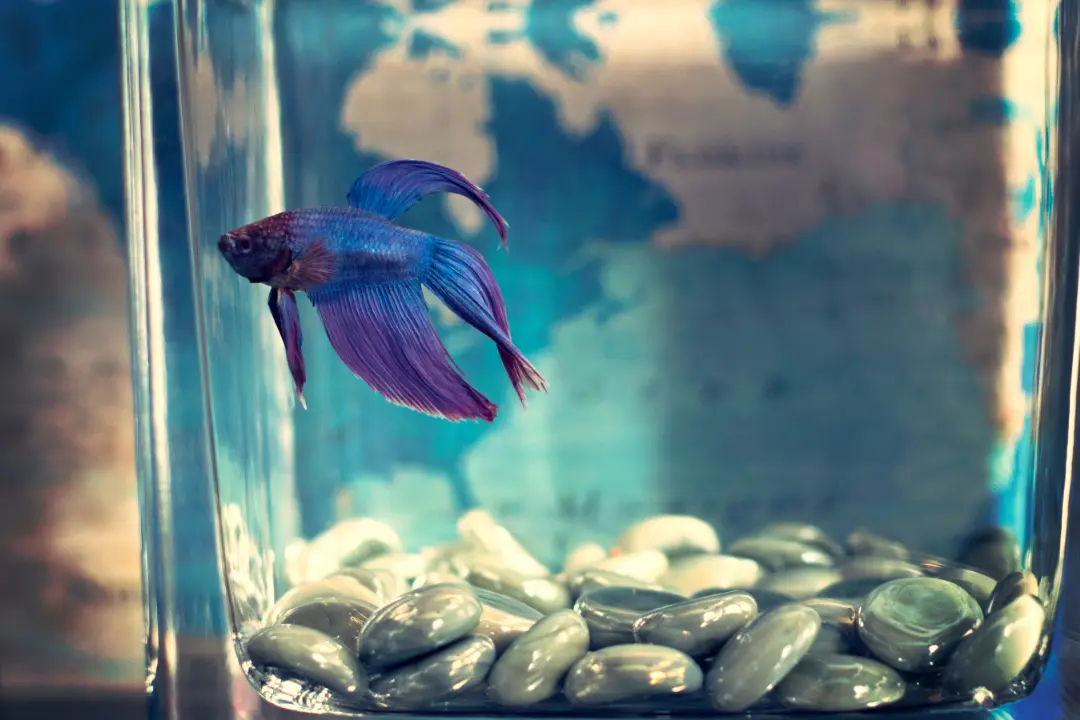
- Isolate the fish in a separate fish tank. It’s best to keep it separate to eliminate any potential risk of a Popeye outbreak in a tank. after all, one can never be sure if the assumption of the underlying cause is correct or not.
- Improve the water quality to make the tank conditions pristine. Perform a 25 to 50 percent water change immediately.
- Remove any sharp objects like edgy plants, pointy rocks, and decorations that could injure the fish. It’s best to never add such objects to the tank in the first place.
- Add some antibiotics to the tank. Administering antibiotics can help the fish recover quickly. Commonly used medications to treat Popeye include kanamycin or erythromycin. Follow the dosage on the packaging. If possible, consult to veterinarian before using any medication. Overdose is harmful
- Stabilize the water temperature and use a water test kit to keep the parameters ideal. keep the temperature between 78 to 80 degrees Fahrenheit. The ammonia, nitrate, and nitrite levels must be safe as well.
- Add some aquarium salt to the isolation tank. You can use 1 teaspoon of aquarium salt per gallon. Aquarium salt is proven to reduce stress, kill bacteria, and promote healing. However, don’t add a large amount of salt as it can be dangerous to the fish and the plants.
Pssssttt! Here are some of the Best aquarium Salts and ammonia detoxifiers to get rid of Betta fish Popeye.
The main issue behind this type of Popeye is a tank with aggressive tankmates or sharp objects. Remove such factors from the tank to prevent this issue from occurring again.
Bilateral Popeye Treatment
Bilateral Popeye is different from unilateral Popeye and requires more intense treatment. As discussed earlier, this type of Popeye is caused by bacteria. Follow the below-given steps to treat Bilateral Popeye in Betta fish.
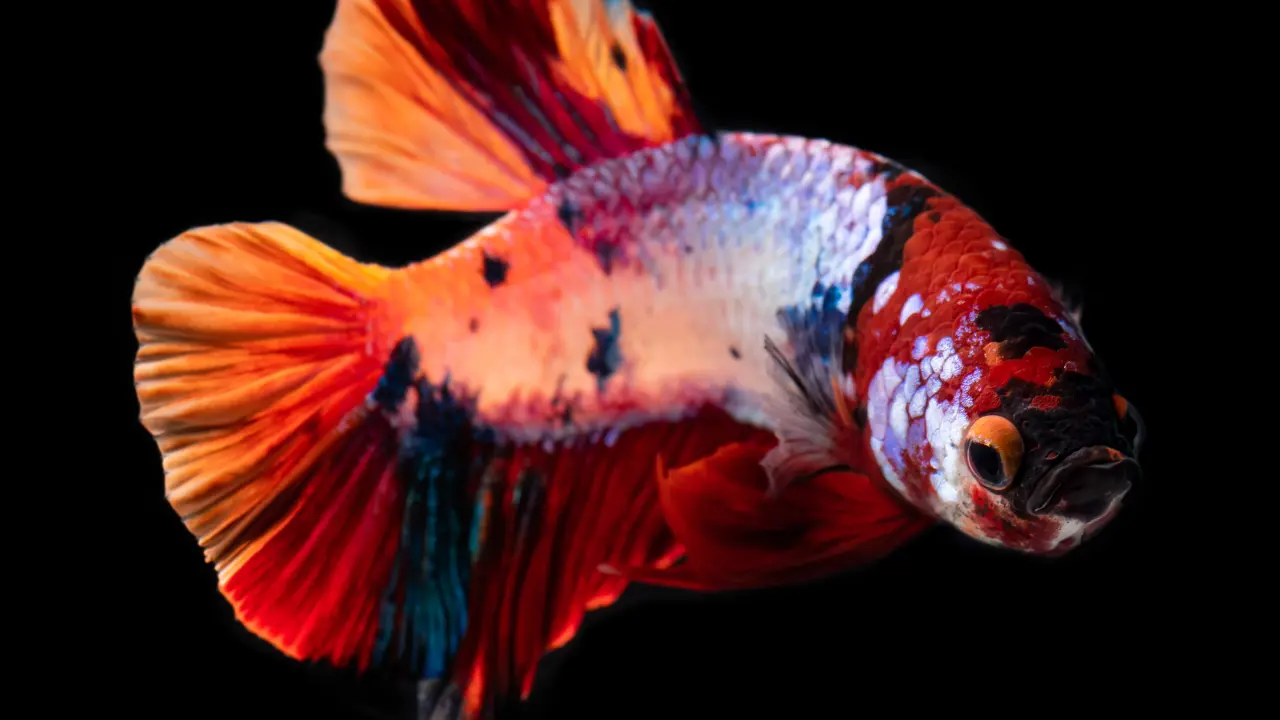
- Isolate the fish in a separate tank. In this case, it is mandatory to keep the fish isolated from others as Popeye might spread.
- Test the water parameters using a high-quality water test kit. Check the ammonia, nitrate, and nitrite levels and ensure they are at safe levels.
- Perform a 25 to 50 percent water change daily for several days, at least until the fish starts to recover. The new water must match the old water’s temperature parameters.
- Use a water conditioner and a filter to keep the tank water clean. Make sure the environment is pristine and has no stress factors.
- Administer antibiotics like Maracyn and tetracycline. Follow the dosage on the packaging or the prescription by a veterinarian. You can use API Melafix infection remedy.
- Add Epsom salt to the tank water. It will effectively help to reduce swelling. You should dissolve it in a separate container and then add that water to the isolating tank. This will ensure that the salt is dissolved completely.
- Maintain the Water parameters and regularly monitor the fish. Act promptly if any visible discomfort or stress is observed.
All in all, this was the best treatment for Betta fish Popeye disease. If the fish shows no positive response or recovery, it’s best to consult with a veterinarian.
How to Prevent Popeye Disease
It is crucial to maintain a proper tank for a thriving Betta. The primary causes of Popeye include poor water conditions that stress out the Betta. This leads to a weakened immune system which makes the fish prone to disease. To prevent the Betta Popeye, maintain a thriving fish tank by following the tips given below.
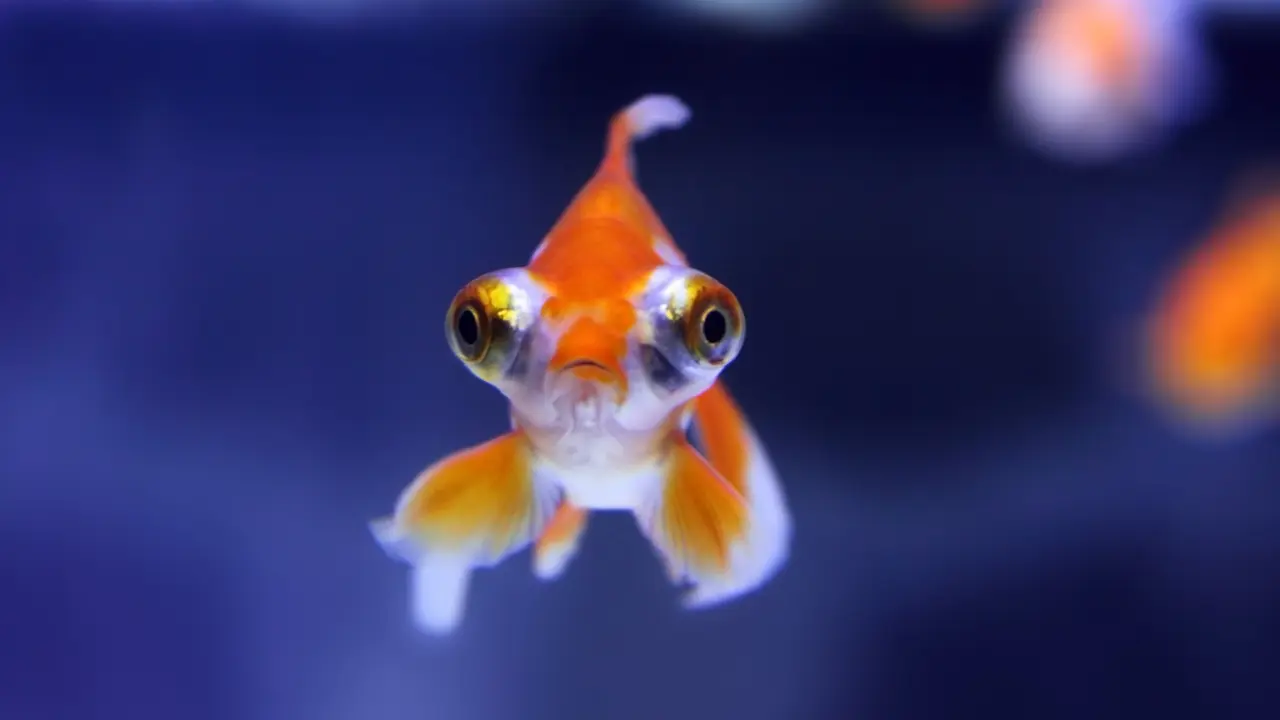
- Make a cleaning routine and regularly change the tank water. It’s standard to change 20 percent tank water every week. This helps maintain safe ammonia and nitrate levels. Additionally, the quality of water is preserved.
- Use a high-quality water filter. It will continuously clean the tank water and ensure a hygienic environment.
- Always feed the fish with a balanced diet that promotes its health. The Betta fish diet must contain proteins, nutrients, and vitamins to support the immune system. Always avoid overfeeding as leftovers contaminate the tank. Additionally, overfeeding leads to health issues like fatty liver and swim bladder issues.
- Maintain a stable tank environment with no stress factors. Make sure all your tankmates are compatible. Add hiding spots and use natural plants to make separate territories. These factors are essential to reduce stress in your biotope.
- Ensure that the tank has no sharp objects. These objects can damage the delicate Betta body. Always use soft and smooth decorations that can’t injure any fish.
- Lastly, if you notice any aggression, separate the fish immediately. This way any potential injury can be prevented.
By Following these instructions, you can make your thriving fish biotope. Suck tank setups will reduce the risk of outbreaks like the Betta Popeye. In addition, if your fish has experienced such a situation, you must follow these guidelines to safeguard any future issues for the fish.
FAQ’s
What are the first signs of Popeye in betta fish?
The first signs of Popeye disease in Betta fish include protruding eyes. It seems as if the fish hasn’t taken a nap for a long time. Along with swelling, the fish might have milky and discolored eyes. The Betta fish can also exhibit behavioral changes like hiding in caves and avoiding light.
How do you treat a betta fish’s bulging eye?
First of all, you must determine what type of Popeye disease is it. If it’s unilateral, keep the fish in a separate tank. Maintain its cleanliness by regular water changes and use aquarium salt as mentioned in the treatment section.
If the Betta fish has Bilateral Popeye, isolate it in a separate tank and use Epsom salt as guided in the treatment section. Additionally, administer medication as prescribed by a veterinarian.
For a more detailed treatment, kindly read the article above.
Can Popeye in betta fish be cured without medication?
Yes! In some situations, it is possible to heal the fish by only maintaining a clean tank. However, medication is necessary in most cases.
Can a fish live with Popeye?
Yes! However, it will be extremely painful for the fish. The fish can potentially lose its vision, partially or completely. In severe cases, the affected eye might pop out of the eye socket, which results in complete loss of eye.
Conclusion
So, this was all about the Popeye disease in betta fish. In today’s article, we discovered one of the most common diseases in Betta fish. We also explored the reasons, symptoms, and treatments for this disease. Along with that, we covered the safety measures to prevent your Betta from getting the Popeye.
In essence, Popeye is a common disease in Betta fish that can occur due to an injury or infection. Generally, the Betta fish will have protruding and swollen eyes as symptoms of Popeye. Treating Popeye due to injury is much easier as compared to the one caused by an infection. The best way to cure this disease in any case is to keep the tank clean at all times. The water parameters must be ideal and the tank must have no stress factors. For a more detailed insight, read the article given above.
So let me ask: Have you ever noticed your betta having huge bulgy eyes? Share your thoughts and queries in the comments below.
For more informational articles about Betta fish, visit the Fish Disease section. Here’s a personal recommendation for the Betta fish fin rot disease.

